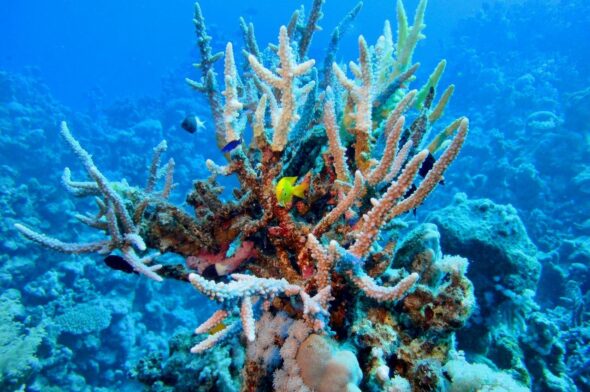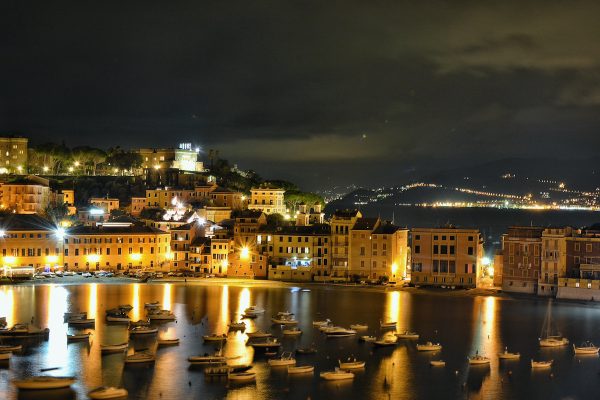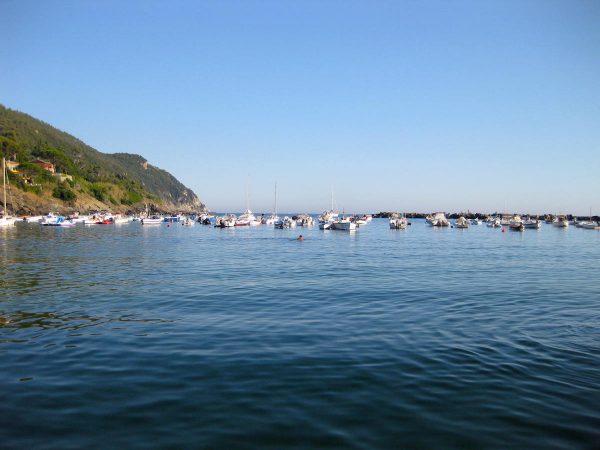 Diving
Diving
How is Australia’s Great Barrier Reef doing? It has halved in the last 25 years
- Photos
- 20 January 2021
Sestri Levante is a Ligurian city of approximately 18,500 inhabitants in the province of Genoa, located along the Riviera di Levante. It is defined as the “city of two seas” due to its geographical formation characterised by a thin isthmus connecting the “island”, a rocky promontory surrounded by the sea, to the mainland, dividing the waters of the beautiful Baia delle Favole from those of the Baia del Silenzio.

Sestri Levante
Sestri Levante is located in the south-eastern part of the Tigullio Gulf, on a floodplain which was formed by the erosion and detritus brought there by the rivers, Gromolo and Petronio. On the plain is where the modern part of the city has been built, extending from the sea to the inland hills, while the historical centre is located between the two bays and the isthmus dividing them and connecting the mainland to the rocky promontory of the island dominating the coast. The vegetation along the coastal area is predominantly Mediterranean scrub, together with a holm oak woods. In the past maritime pine groves were common, but the number of these trees has diminished quickly over the last few years. Alternating with the dominant vegetation are olive groves, vineyards, vegetable gardens, and orchards. Its particularly temperate climate makes it an ideal tourist destination, not only during the summer season, but also in autumn and winter.
According to tradition, the city was founded by the Liguri Tigulli and during the Roman period it became an important commercial and maritime town, known under the name Segesta Tigulliorum. Falling into decay with the Barbaric Invasions, the original nucleus of the village was built up on the island during the Middle Ages, to then extend towards the floodplain. In this period it passed under the dominion of the Fieschi family and then to the Republic of Genoa (1134), who fortified it along the coast (they built the castle on the island) with whom it stayed until the Napoleonic conquest. In 1815 it was annexed to the Kingdom of Sardinia and then to the Kingdom of Italy (1861).
The city has a number of artistic and architectural wonders. In the borough, the characteristic Ligurian houses alternate with a number of noble buildings and villas as well as religious buildings. Among these, of particular interest are: the seventeenth-century Convent of the Cappuccini, the remains of the Baroque oratory of Santa Caterina, Palazzo Negrotto Cambiaso, the Medieval church of San Nicolò dell’Isola, the twentieth-century Villa Gualino, and Torre Marconi. The last three buildings are located on the Peninsula: Villa Gualino is now a hotel, while Torre Marconi, located within the surrounding park, cannot be currently visited. The tower is part of the ancient chain of watchtowers built by the Republic of Genoa to protect the coast from attack from the sea, but its name is decidedly much more recent: indeed it bears this name because it is from here that the great scientist, Marconi, carried out some of his experiments.
Sestri Levante also has a large network of walks and hiking trails surrounded by nature going through a variety of sites considered to be of community interest, meaning areas which, due to the environmental preservation characteristics are considered to be particularly important for the entire European Community. Most of these trails overlook the sea and some of the most well known are Punta Manara, a charming promontory between Sestri Levante and Riva Trigoso: the trails, well marked and easy to explore, provide breathtaking views. Other interesting itineraries to follow are certainly those of Punta Baffe, promontory located at the eastern edge of the by of Riva Trigoso, and S. Anna, located at the western edge of the city.

Baia del Silenzio
From a tourist point of view, of great interest are the two bays on which the town is located and which give it the name of “city with two seas”: Baia delle Favole and Baia del Silenzio. The large Baia delle Favole, has this name to highlight the ties this city has with the writer Hans Christian Andersen who stayed there in 1835, along it is a beautiful boardwalk: there is also a tourist port where visitors can admire the characteristic fishing boats and other types of fishing vessels used in traditional Ligurian fishing. Its beach, dotted with a number of beach resorts, is nearly 1700m long and is mostly sand, which makes it one of the largest sandy shores in the Tigullio Gulf. Along the seaside, in addition, there are also a number of hotels, restaurants, ice cream shops, cafes, and other tourist attractions. Baia del Silenzio, the smaller of the bays, is considered to be one of the best in Italy. The area, surrounded by the colourful Ligurian houses, is certainly evocative: in the off season its crystal clear water and quiet nature contribute to the charm which makes it stand out.
The area is also home to two SCI areas (Sites of Community Importance): “Fondali Punta Sestri” and “Fondali Punta Manara”. Both sites have been chosen because of the presence of a meadow of Posidonia seagrass and distinctive animal species. Fondali Punta Sestri is an area of 9.8 hectares opposite from the city island made up of a small meadow of Posidonia seagrass. It is mostly a rocky sea floor, between 10 and 25 metres deep, and borders with meadows of Cymodocea nodosa seagrass. Particularly interesting is the fact that the meadow penetrates into the Golfo di Levante (Baia di Portobello) to less than a metre of depth. Fauna includes species of great interest: the grey wrasse, ocellated wrasse, pointed-snout wrasse, peacock wrasse, and the broad-nosed pipefish. Fondali Punta Manara, is, instead, a site of 18 hectares extending from the point of the promontory to an area near Riva Trigoso. The meadow of Posidonia seagrass grows on sand and “matte” and borders in certain areas with boulders and rocky sea floor which, in the higher areas, have a large population of corallines, with a variety of species of soft corals. Among the species of interest are: sea sponges, seahorses, grey wrasse, ocellated wrasse, peacock wrasse, pipefish, broad-nosed pipefish.
Lastly, it is important to note that the city is located in an enviable position from a tourist point of view: with the transport available (train or ferry) it is possible to easily reach other famous Ligurian attractions quickly.
The port of Sestri levante is made up of two jetties and a pier. The pier extends northward about 250 metres and is near one of the jetties. The other jetty is located to the north-west of the Maritime Office [Ufficio Marittimo] and only small boats can dock there. Adua wharf is reserved for unloading fish and for the launch of boats, while Margherita wharf is equipped for motorboats transporting passengers. The spaces available are 150, of which 6 are reserved for transit. In the dock reserved for transit, vessels can only dock by the stern and only vessels shorter than 20 metres in length are authorised to do so. It is possible to dock for free in this area for five days, extendable to another five, if available. The mooring management is administrated by Lega Navale and by the Yacht Club. Once in port, boats cannot go faster than the top speed of three knots and in order to dock, permission must be given by maritime authorities. Outside of the port area, it is possible to drop anchor, but from 1 May to 30 September it is not permitted.
Port services offered are:
 Diving
Diving
